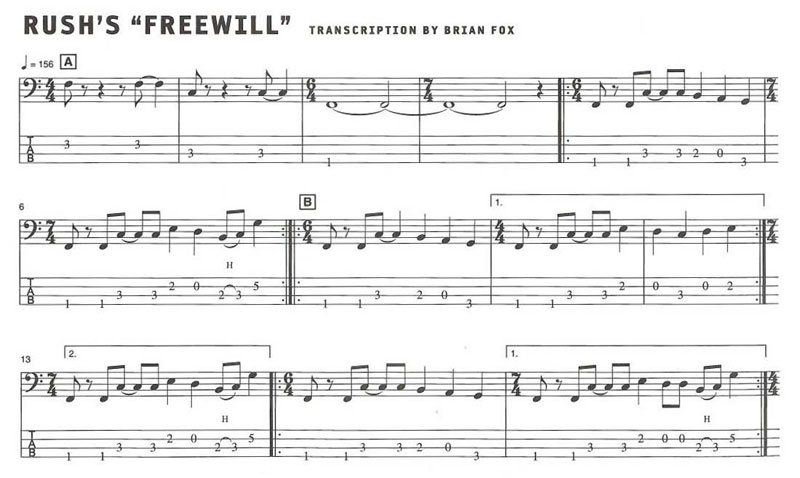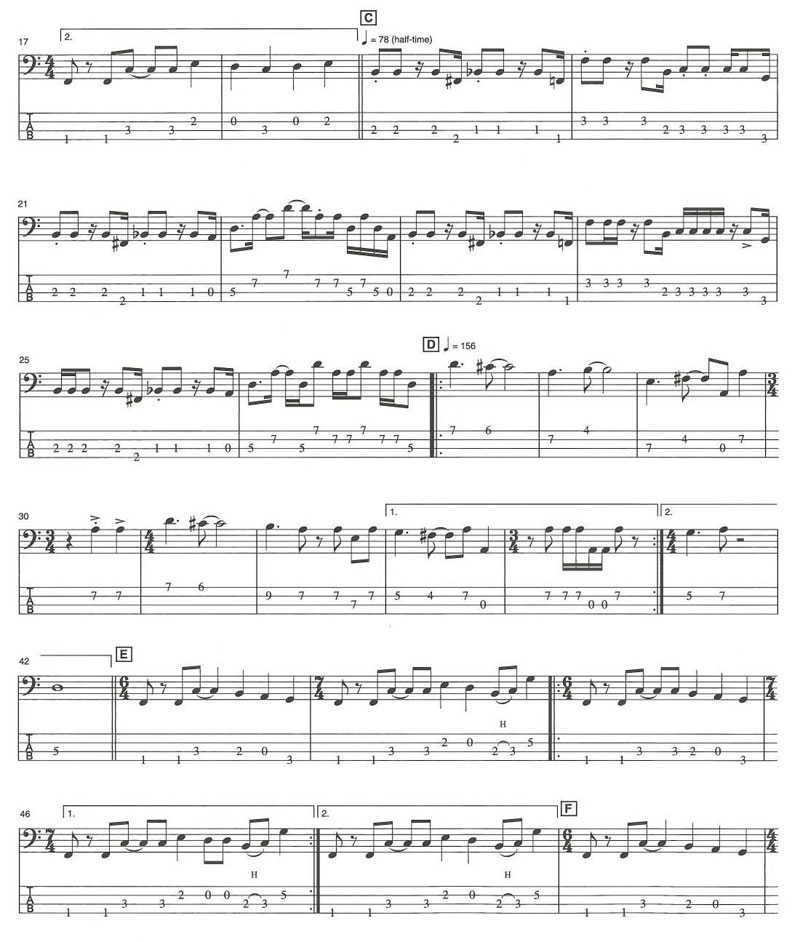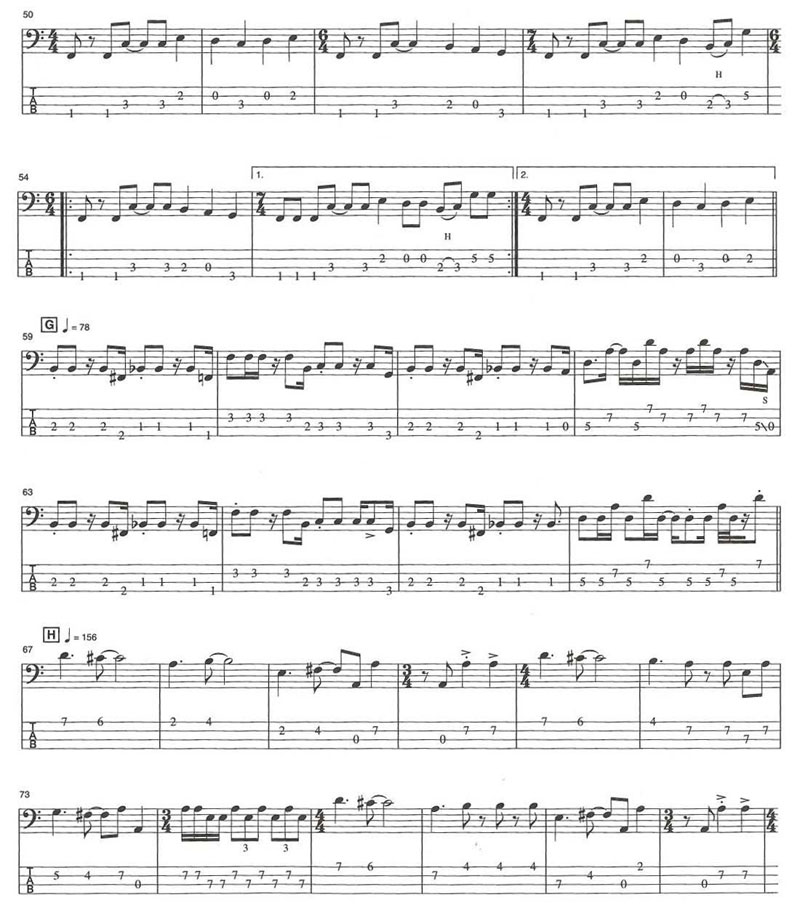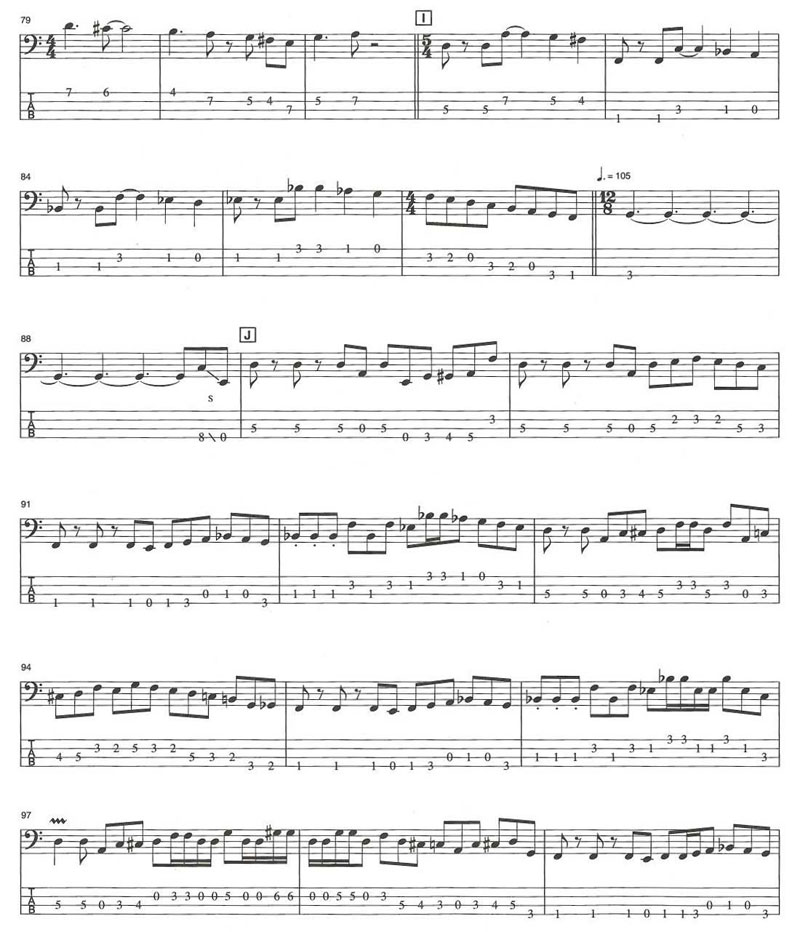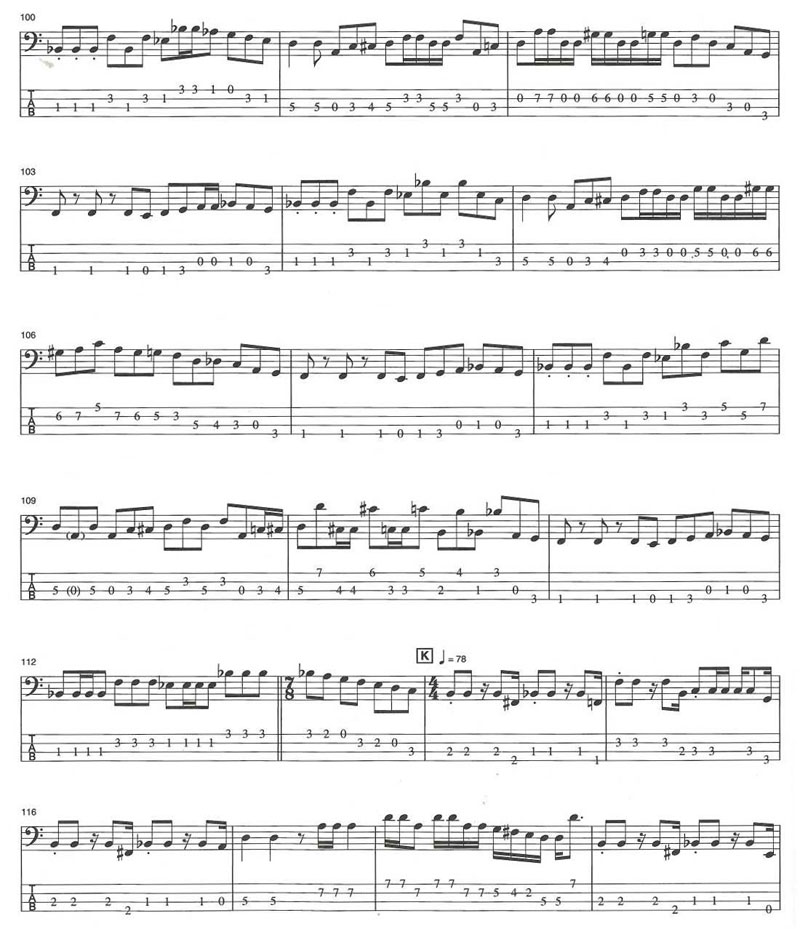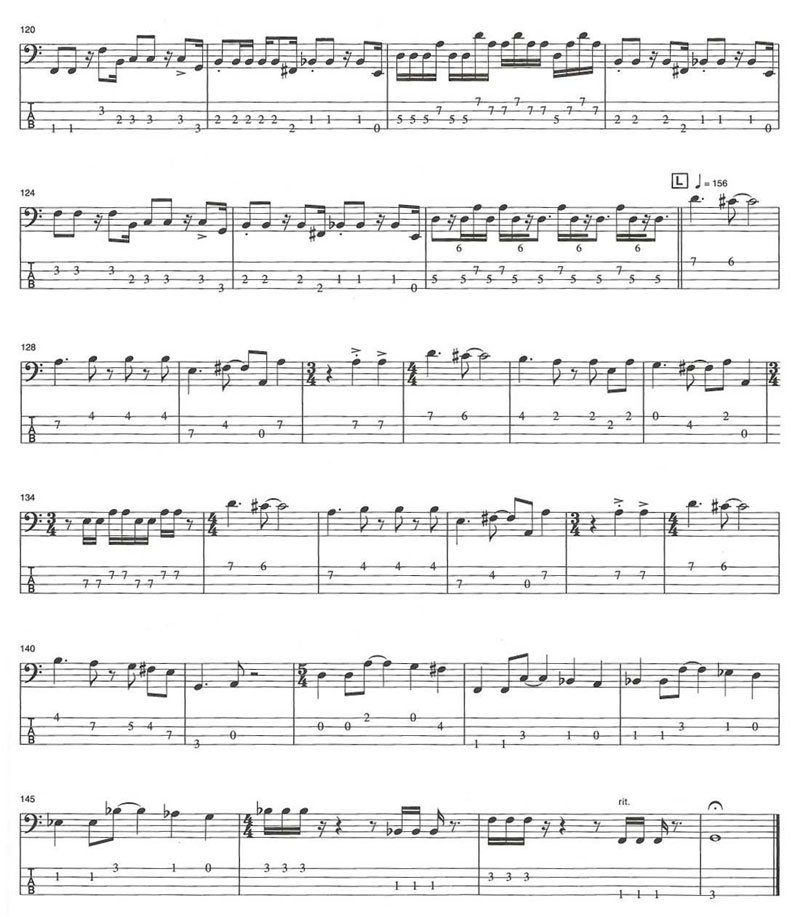Transcript: Rush's "Freewill"
Geddy Lee's Complete Bass Line
By Brian Fox, Bass Player, February 2006, transcribed by pwrwindows
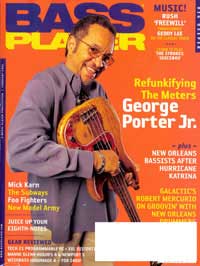
Still strong after over 30 years of touring and recording, Rush frontman Geddy Lee, drummer/lyricist Neil Peart, and guitarist Alex Lifeson have learned to strike a healthy balance between work and play. The band's massive arena productions display the trio as consummate professionals, each a master of his instrument. But take a closer look. Does Geddy's backline "rig" actually consist of clothes dryers and lunchroom vending machines? That's the kind of playfulness that's been at part of the band's dynamic since its early days. Case in point "Freewill," from Rush's seventh studio album, Permanent Waves. While Peart's lyrics are rather erudite-they're based loosely on the writings of novelist/philosopher Ayn Rand-inspiration for the song's musical components might have come from more juvenile pursuits, as Geddy explains. "We rented a farm in Northern Ontario, and in between writing sessions, we'd watch Alex crash remote-control airplanes into trucks.
"Back then the three of us wrote music like your average basement band-by getting in a room and throwing songs together," Geddy continues. "That was a stage where we were very driven by technical playing. We were kind of obsessed with taking rhythms and playing them in odd time signatures-either by adding a beat or dropping a beat-but making them feel smooth. That definitely came into play on 'Freewill.'"
Geddy remembers the recording sessions at Le Studio in Morin Heights, Quebec, being "among the freshest, most spontaneous sessions" Rush ever had. Nailing tracks in one take was very important to the group, but Geddy recalls being able to punch in to make sure he and Neil were locked. "We always rehearsed the songs and planned them out before recording," he says, "but of course spontaneity takes over sometimes. If a new drum fill came out during tracking, I'd have the chance to go in and change my part to make sure we were grooving."
After Alex first states the songs signature riff over Geddy's low F in bars 3 and 4 of the intro (A), the two go on to play in unison from bar 5. Notice that when Geddy plays under the verse at B, he holds the C across beat three to leave more space for the vocals. At C, the band cuts to a half-time feel for a prechorus, which Geddy recalls writing as an answer to Alex's odd-time verse riff. Be sure to play staccato on beats one and three as you navigate through Geddy's syncopated fills and accents. (Ever wondered what a 32nd-note sounded like? Check out bar 66.)
"Once Neil has written a drum fill, he sticks to it, and that gives me the chance to find something wacky to fit inside what he's playing," says Lee. One such fill occurs at 74, one of the chorus's bars of 3/4, where Neil plays a tweaked-out tom run that sounds like a ten-over-nine superimposition. "It's one of those fills that sort of goes into slow motion and pulls against the time," Geddy chuckles. "That's the kind of thing that just came out when we played together."
At I, time shifts once again, this time to 5/4 as the band winds up for the middle section, with Geddy and Alex outlining D, F, B♭, and E♭ major triads before descending diatonically to G at bar 87, which marks the shift to a 12/8 shuffle feel "We'd build songs around the riffs we liked and then look for ways to weird out in the middle. Guitar solos were still a big part of the scene then, but we'd experiment with different types of middle sections. For 'Freewill,' we decided to cruise into that bass-and-drum shuffle and have Alex float in on top of it. We used a Moog Taurus [synth-bass pedalboard] for a low G at the beginning of the solo to start it off with a little more bottom end. That sets up the drama of me sliding into the solo. I don't think that middle section was very strict when we tracked it-l probably played it a little different every time. Then after it was finished, I had to go back and learn what l bad played! As I've played it over the years, little nuances change, but the basic structure remains l always start with the same basic building blocks."
After sliding down from C to E on the pickup to bar 89, Geddy builds his part around a four-bar phrase where he outlines two bars of Dm, a bar of F, and then a bar of B♭ to E. "I don't like to have free-flowing bass parts that don't have somewhere to go, so we bad that circular progression Neil and I could groove on. Once we played it a bunch of umm, we worked out points where we'd come together." Again, be sure to play staccato on the Bb's of every fourth bar, and juice up the D downbeat on bar 97 with some bend-and-release vibrato. Geddy's line grows denser as the solo progresses. While the sections first 16th-notes appear at bars 92 and 93, compare those two bars with bars 102 and 105. Before attempting this solo, you'd better loosen up that plucking hand of yours!
The solo section is packed with a bunch of other slick licks, like Geddy's angular 1-5 climb back to D in beats seven through twelve of bar 108, and his disco-esque octave jumps two bars later. But all good things must come to an end, as the solo does with a diatonic descent (in a bar of 7/8!) to the final prechorus, K. This section contains the winner for this track's most whacked-out rhythmic figure-check out bar 126. lf you're feeling rhythmically challenged at this point, don't despair! Just break down each of the bar's four beats into six subdivisions. If you were to count this one out, it would go something like: "ONE-FOUR-five-six-ONE-two-FOUR-ONE-two-FOUR-ONE-two-FOUR." Got that?
With over 20 records in 30 years, there are plenty of opportunities to dig deeper into Geddy's muscular and melodic playing. But with its upfront and aggressive tone, tweaked-out odd-time grooves, and adventurous spirit, it would be hard to find a clearer snapshot of Geddy's flamboyant style than "Freewill."
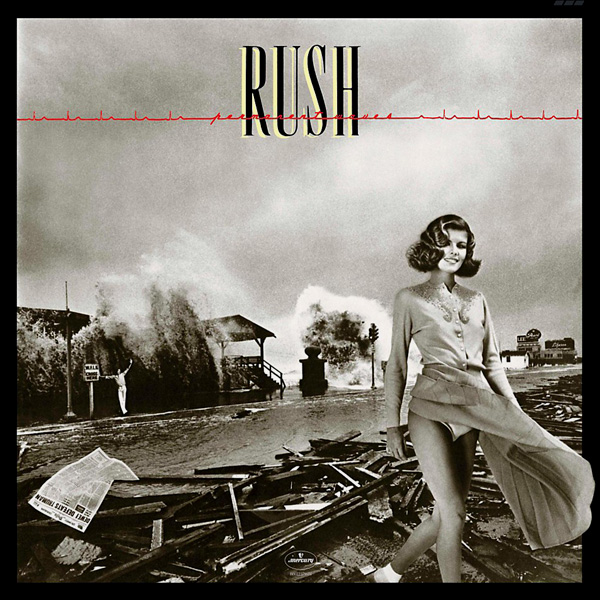
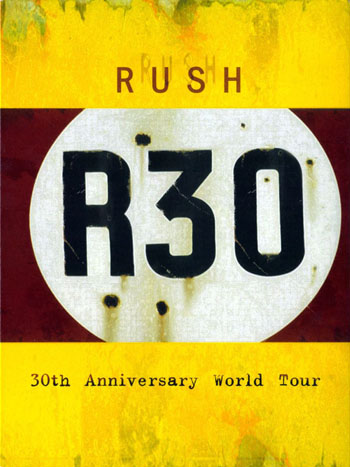
SPIRIT OF RADIO
Released on January 1, 1980, Permanent Waves arrived as Rush was beginning to whittle down its experimental epics into more manageable tidbits like "Freewill" and "Spirit of Radio" (Previous albums like 2112, A Farewell to Kings, and Hemispheres were more conceptually ambitious offerings.) It was a recipe the band continued to refine-Rush's next album, Moving Pictures contained such classic rock radio staples as "Tom Sawyer" and "Limelight."
PEARLS
The DVD/CD set R30: 30th Anniversary World Tour compiles footage spanning Rush's entire career. Disc One showcases the bands 2005 performance at Frankfurt, Germany's Festhalle, while Disc Two contains early interviews and performances.
RICK'R TREAT
Geddy played his Rotosound-strung Rickenbacker 4001 on "Freewill," sending its neck pickup output to one set of amps, and its bridge pickup to another. "Typically we'd record the neck pickup direct and send the bridge pickup to a miked cabinet, usually 15" Theil cabinets," he says. Engineer Paul Northfield would then blend the two signals, adding compression. "Paul loved this piece of gear called a Loft [probably a Loft 440 line Delay/Phaser]. He'd put it on bass solo parts to create a stereo feel-to put the bass out to the edges [of the stereo field] and give it instant width."
